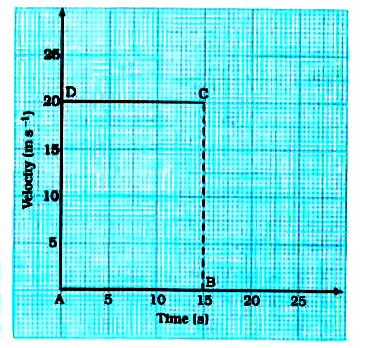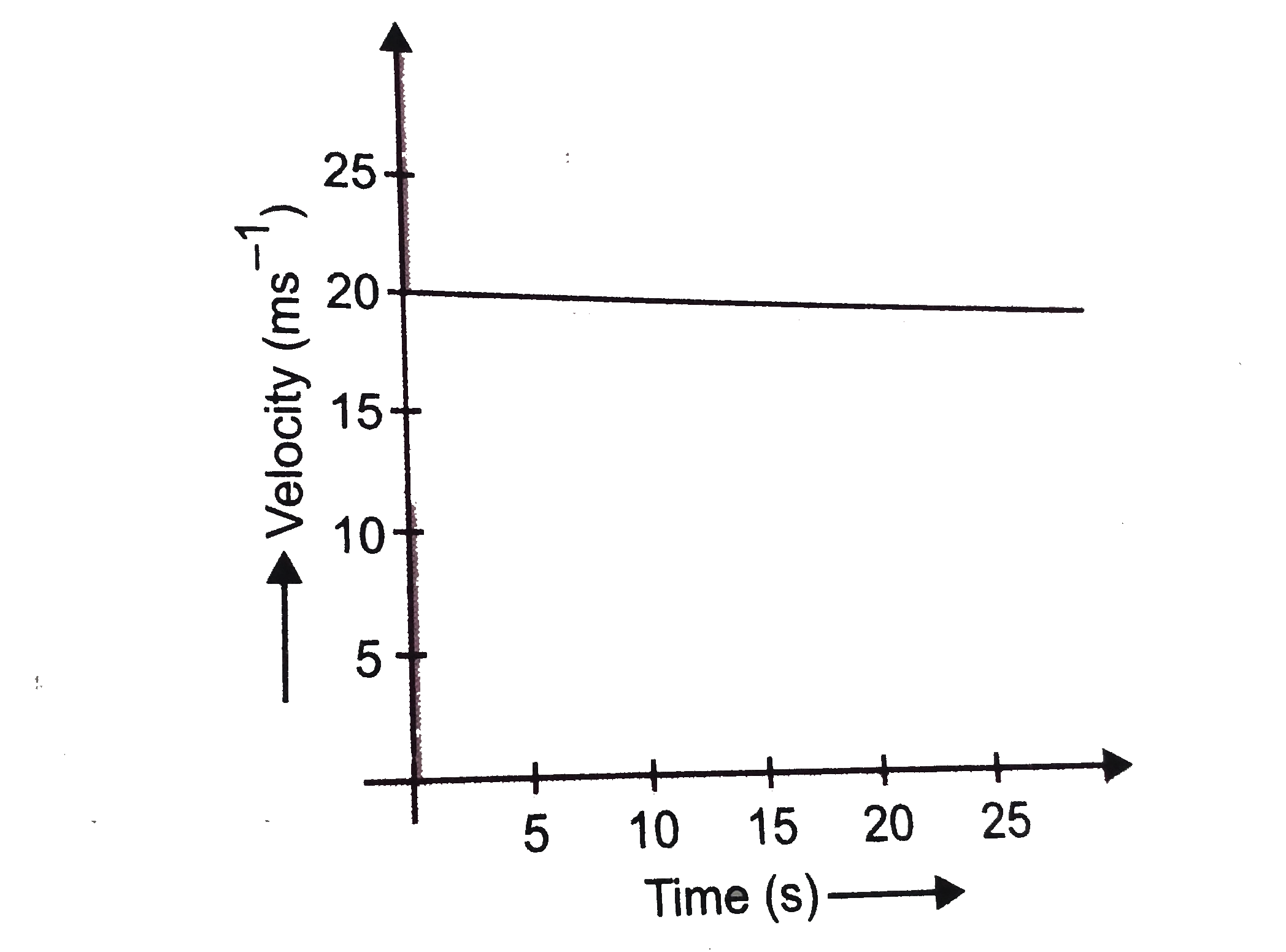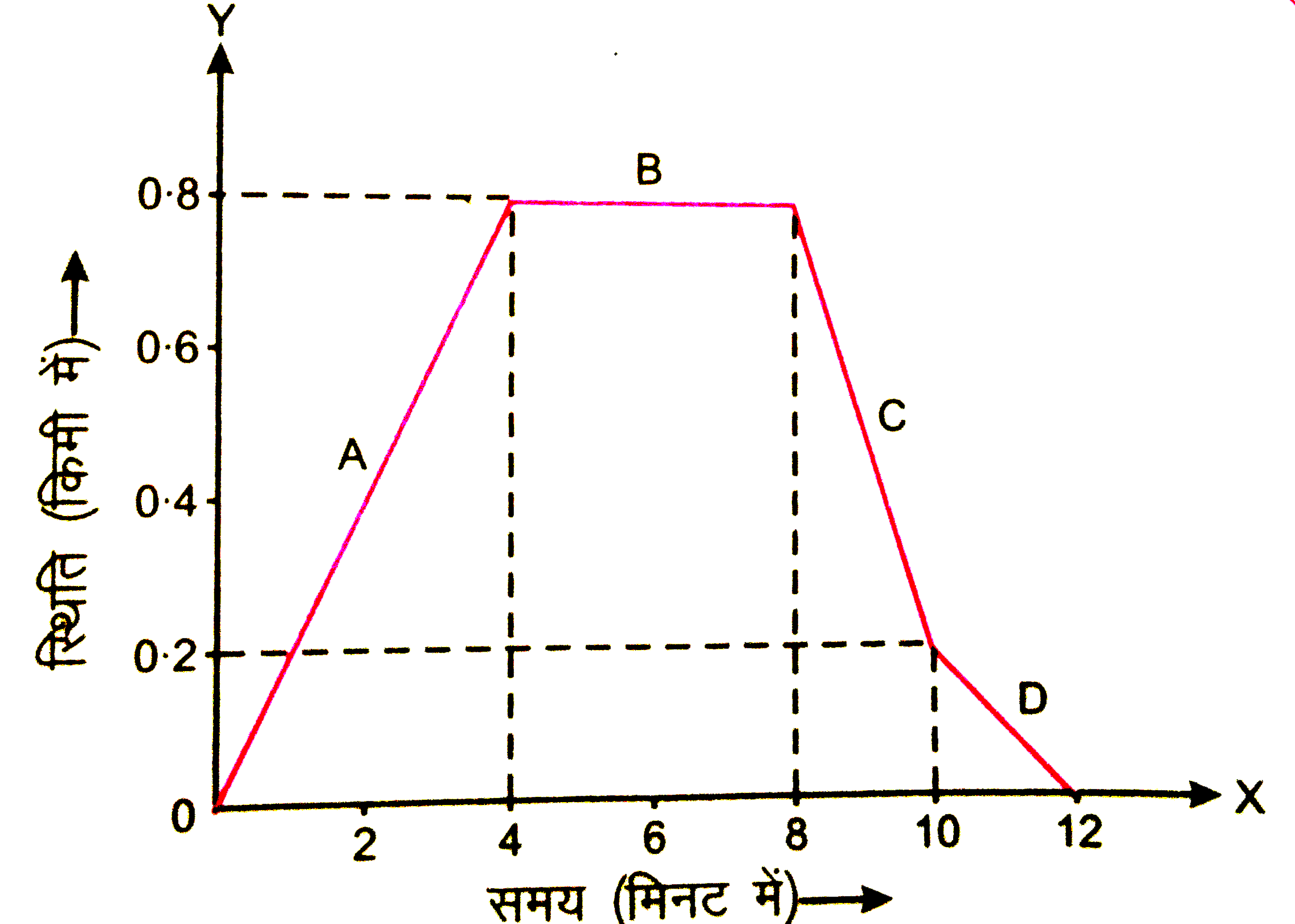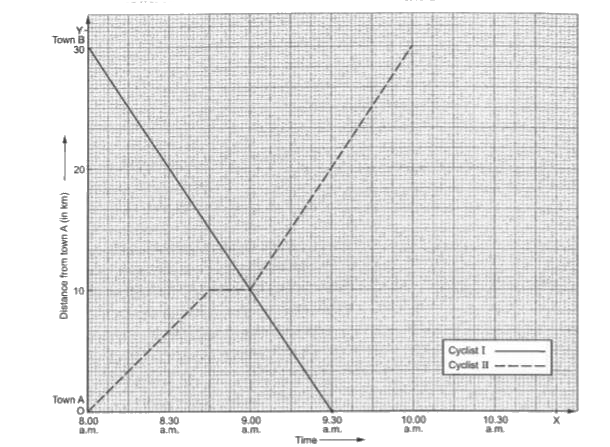The velocity-time graph shows the motion of a cyclist. Find (i) acceleration (ii) its velocity (iii) the distance covered by the cyclist in 15 second
 Solution in Gujrati
Solution in Gujrati
(i) From the graph, the velocity of the cyclist is uniform. So, the acceleration is O (Zero).
(ii) The velocity of the cyclist is 20ms−1.
(iii) The distance covered by the cyclist = area of rectangle ABCD
=AD×AB
=(20ms−1)×(15s)=300m
Topper's Solved these Questions
- MOTION BOOK - KUMAR PRAKASHANCHAPTER - MOTION EXERCISE - STATEMENTS
10 Videos
- MOTION BOOK - KUMAR PRAKASHANCHAPTER - MOTION EXERCISE - MATCH THE FOLLOWING
10 Videos
- MOTION BOOK - KUMAR PRAKASHANCHAPTER - MOTION EXERCISE - TRUE OR FALSE
30 Videos
- GRAVITATIONBOOK - KUMAR PRAKASHANCHAPTER - GRAVITATIONEXERCISE - ACTIVITY 10.4
2 Videos
- QUESTION PAPER 01BOOK - KUMAR PRAKASHANCHAPTER - QUESTION PAPER 01EXERCISE - SECTION - D
5 Videos
Similar Questions
Motion is a relative concept.
View Solution
View SolutionMotion is an absolute concept.
View SolutionTake an empty plastic bottle . Close the mouth of the bottle with an airtight stopper . Put it in a bucket filled with watere . The bottle floats .
Push the bottle into the water. You feel an upward push. Try to push it further down. You will find it difficult to push deeper and deeper. Water exerts a force on the bottle in upward direction. Now release the bottle. It bounces back to the surface.
Does the force due to the gravitational attraction of the earth act on this bottle? If so, why doesn't the bottle stay immersed in water after it is released ?
View SolutionThe mass of a car is 1200 kg. It comes to rest due to retardation of 2ms−2 .
What would be the force (frictional force) acting between the car and road ?
View SolutionA cyclist covers a distance of 750 m in 2 min 20 sec. what is the speed in km/hr of the cyclist?
View SolutionThe velocity-time graph shows the motion of a cyclist. Find (i) its acceleration (ii) its velocity and (iii) the distance covered by the cyclist in 15 seconds.

View SolutionFrom the velocity-time graph of uniformaccelerated motion deduce the equations of motion in (i) velocity and time (ii) distance and time (iii) disstance and velocity.
View Solutionएक साइकिल सवार की यात्रा का वर्णन चित्र 3.38 में स्थिति - समय ग्राफ द्वारा प्रदर्शित है ज्ञात कीजिए :
भाग A तथा C में साइकिल सवार के वेग क्या है ? ये भाग क्या प्रदर्शित करते है

View SolutionHow can you represent (i) motion with uniform velocity, (ii) motion with uniform acceleration and (iii) motion with uniform retardation in a velocity time graph?
View SolutionDraw (i) position-time (ii) velocity-time and (iii) acceleration-time graph for the motion of an object under free fall.
View SolutionThe following line graph shows the journey made by two cyclists, cyclist I and cyclist II, one from town B to town A and the other from town A to town B.

Study the above graph carefully and answer the questions given below :
(i) At what time did cyclist II rest ? For how long did the cyclist rest ?
(ii) Was cyclist II cycling faster or slower after the rest ?
(iii) At what time did the two cyclists meet ?
(iv) How far had cyclist II travelled when he met cyclist I ?
When cyclist II reached twon B, how far was cylist I from town A ?
View SolutionA cyclist acceleration from rest to a velocity of 72 km hr^(-1) in 10sec. If the cyclist is in straight track the acceleration of the cyclist is:
View SolutionThe velocity-time graph shows the motion of a cyclist. Find (i) its acceleration (ii) its velocity and (iii) the distance covered by the cyclist in 15 seconds.
View SolutionDraw the velocity-time graph for uniformly accelerated motion. Show that slope of the velocity-time graph gives acceleration of the object.
View Solution
